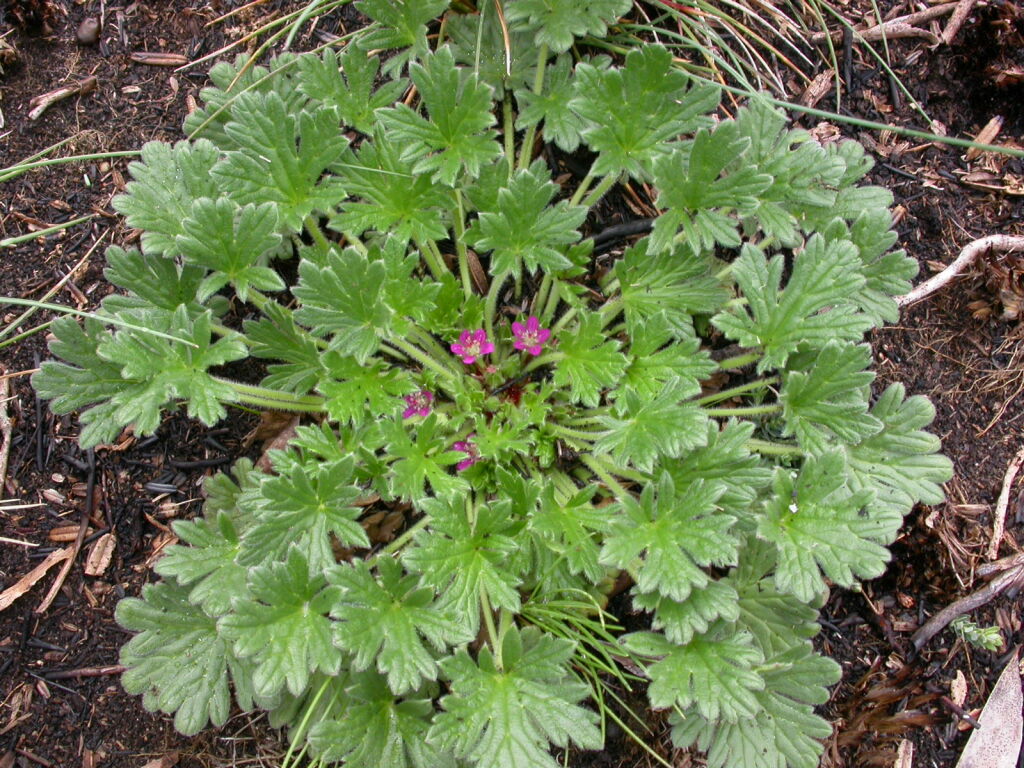Geranium brevicaule
Hook.f.Rosetted perennial, 5–10 cm high; stems absent or very short, not exceeding leaves, covered with short, retrorse, closely appressed hairs and scattered longer spreading hairs; taproot fleshy or woody. Leaves c. orbicular to reniform, 1–2.8 cm long, palmatifid to palmatisect with 5–7, broad, trilobed, often toothed, primary lobes; ultimate lobes acute; upper surface with sparse straight hairs particularly along veins and near margin; stipules broad elliptic to ovate, short-acuminate. Flowers solitary; peduncles 0–0.4 cm long; pedicels to 1.2 cm long; sepals narrow ovate to oblanceolate, 5–6 mm long, acute, hirsute, mucro to 1–1.5 mm long; petals oblanceolate, 4.5–5 mm long, obtuse, red or crimson; anthers yellow with fine blue dehiscence lines. Fruits 10–13 mm long; mericarps sparsely pubescent, suture margins not ciliate; seed dark brown, smooth with minute shallow elongate alveolae. Flowers Dec.–Apr.
VVP, HNF, MonT, HFE, VAlp. Also NSW, ACT, Tas. Restricted to grasslands and herbfields of treeless subalpine and alpine areas.
This species is characterized by its rosette habit, the nearly sessile single flowers with red or crimson petals which do not exceed sepals, and the retrorse to appressed hairs on stems.
Smith, L.P. (1999). Geranium. In: Walsh, N.G.; Entwisle, T.J., Flora of Victoria Vol. 4, Cornaceae to Asteraceae, pp. 219–233. Inkata Press, Melbourne.
 Spinning
Spinning

